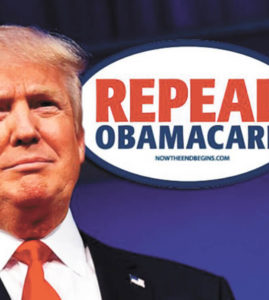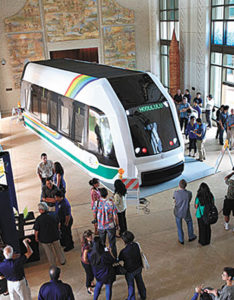Are we not in the same canoe; and so, should we not all paddle together?
My mom told me, “No renew the newspaper.”
“I tired read. No mo’ good news,” she explained. “Better you give me the money and I go buy fish.”
I realize my 88 year old mother is exaggerating. Every time I go by her home, if she’s not watching her story on PBN, she’s tuned into her favorite talking heads on MSNBC.
I doubt what she’s watching is all good news on the cable shows. But it’s an up-to-the-minute yell fest on the latest national storylines. And when I’m there, she’s commenting right along with that show’s panel of experts.

Image Courtesy Republic Broadcasting Network
All the attention being paid to national issues is great because while some in Washington, D.C. may dismiss Hawai‘i as an island in the Pacific, our State has a lot at stake in what the U.S. Congress and current Administration are debating. Approximately 20% ($3.2B) of the State’s $10.4B budget comes federal funds, grants and contracts. For local residents, while Washington, D.C. may seem awfully distant, what the mainlanders and our four-member Congressional delegation are talking about on the East Coast may have profound impacts for the islands.
But at the same time, focus on the beltway is bad for democracy at the local level. Former U.S. Speaker of the House Tip O’Neill famously wrote “All politics is local.” He probably didn’t originate that political proverb but most folks with any campaigning experience would wholeheartedly agree. Issues, especially complex ones, like say Health Care reform, should be fully discussed. But with the news cycle now shortened to instant gratification speed, people just expect Congress to follow the Nike slogan and “Just Do It.”
I still enjoy the long-form writing that used to fill the nation’s daily journals and monthly magazines. An in-depth story in the Atlantic or the New York Times or the Washington Post provides more opportunity for journalistic nuance and for profiling the decision makers and stakeholders.
But as moveable type allowed mass production of the written word, technology happens and continues to happen. First, radio brought immediacy. Then, television provided visual confirmation of events. Then Cable expanded news outlets from the monopoly of CBS, ABC and NBC. And most recently, online “news” providers—including bloggers and commentators—have provided even more alternatives to what had been traditional mainstream media.
With the growth of cable news and online information—and perhaps the smaller attention span of the American people that have adapted to and even adopted the new reality show ethos—there’s less patience with the traditional long slog that underlies the work of representative democracy—what John McCain described as “regular order” where legislators hear from local folks on their experience, advocates, opponents, think tanks and stakeholders on various options, and through that process can become informed of the trade offs in adopting particular policies.
In the Donald J. Trump-era—our first reality tv President—the news cycle can be as short as a minute, depending on whether he’s tweeting actively or on the golf course.
As an example, the repeal-and-replace circus over the Affordable Care Act (Obamacare) glossed over whether any change would have impacted Hawai‘i’s unique employer-provided healthcare law.
Since 1974, the Hawai‘i Prepaid Health Care (PHC) Act, Hawai‘i Revised Statutes Chapter 393, has set minimum standards of health care benefits for workers. Under the law, businesses are required to offer health insurance to employees who work more than 20 hours per week for four or more consecutive weeks. The law only excludes individuals working less than twenty hours per week, agricultural seasonal workers, insurance or real estate salespersons paid solely by commission, individuals working for family members (son, daughter, spouse) or children under 21 working for their mother or father. In contrast, the federal law requires employers to offer coverage to employees working at least 30 hours per week effective Jan. 1, 2014.
Employers are required to pay at least half of the premium and the law also limits the amount that employees contribute towards premiums to 1.5% of their wages. While employers are not required to provide family coverage, depending on the type of plan offered by an employer, employers may offer family coverage and either the employee pays 100% or 50% of the family premium.
Hawai‘i’s prepaid health and Obamacare also differed in the kind of penalties and incentives for compliance. Under the Hawai‘i law, our insured rate has been consistently over 90%.
At the local level, what happens in the square building on South Beretania Street certainly impacts residents on Lower Main Street on Maui.

Image Courtesy ansaldohonolulu.com
You would think from the local media, the only issue being considered this past legislative session was whether to bail out the City and County of Honolulu on its rail project. And legislators certainly contributed to that storyline in how the session ended and in calling for the Special Session expected at the end of August.
The O‘ahu-only GET surcharge (0.05%) has been in effect since January 1, 2007. As part of the political bargain to allow the counties the option of adding a surcharge on the GET, the State kept 10% of the collected surcharge. Only O‘ahu passed an ordinance to implement a surcharge and through 2016, that 10% (approximately $194,989,800) has been allocated to pay for statewide services, including schools, colleges, hospitals and social services on the Neighbor Islands.
In 2016, the Honolulu Mayor and Honolulu Area Rapid Transit (HART) Authority requested and obtained a ten-year extension of the surcharge to 2027. The Mayor assured legislators the extension would cover the budget overruns for Honolulu’s rail project. Unfortunately, after the legislative session ended, HART projected the costs of completing rail to Ala Moana to be much higher. The Mayor, HART and the City Council asked yet again for more funding for a project that has never been on time or on budget.
One of the casualties of the rail frenzy at the end of conference was the sunset of the current transient accommodations tax (TAT) allocation to the four counties of $103M. Since a bill to extend the life of the $103M allocation died, the Counties’ share of TAT funding returned to the base cap of $93M.

At the close of the legislature, the House and Senate were split on how to address the rail shortfall and whether to address the County TAT cap.
The House at the end of the session proposed and approved increasing the TAT statewide to 10.25% (1%) for 11 years (2028) and extending the life of the 0.05% Honolulu-only GET surcharge for an additional year from the present 2027, also to 2028. The Senate countered by proposing that the 0.05% Honolulu only GET surcharge be extended ten years from the present 2027 extension to 2037.
The Governor recently announced he would be open to a 1% hike in the TAT to help fund Honolulu’s rail project. But he also opposed increasing the Counties’ share of the TAT above $93M.
On the other hand, Neighbor Island County officials are opposing any increase of the TAT that applies statewide, arguing that their residents should not have to pay for rail since they will not be using the system. Of course, since 2007, Neighbor Island state services have received some portion of the $193M paid by O‘ahu residents from the GET surcharge, as well as most of the general tax revenues supporting government services like schools, health inspectors, social workers and the public hospitals service rural parts of the islands. The Honolulu Mayor, the City Council and HART—and the workers supporting and building the rail system—just want a funding solution at this point.
And the Federal Transit Administration is lurking with the unstated threat of pulling back its commitment of $1.55B in the rail project and demanding repayment of what has already been contributed.
So the parties have staked out their positions and we’ll see what funding ideas are actually included if the legislature returns at the end of August.
In the meantime, I think when I pick up some fish for my mom, I’ll just wrap it in the newspaper so she can still get some local news. Or I suppose I can wrap in it the Fil-Am Voice.
